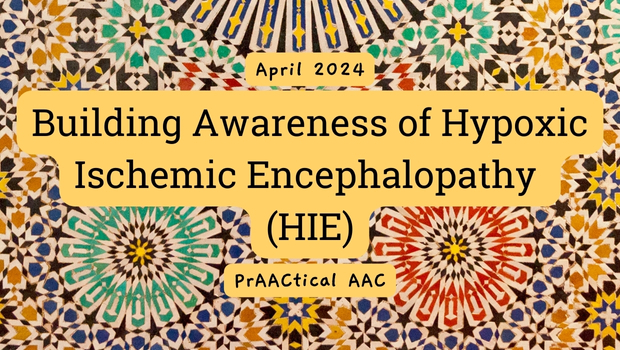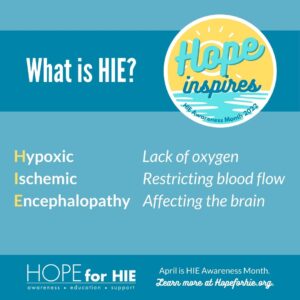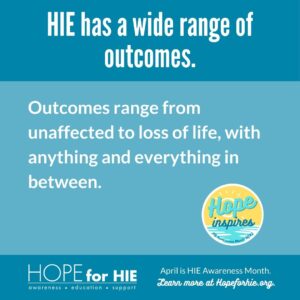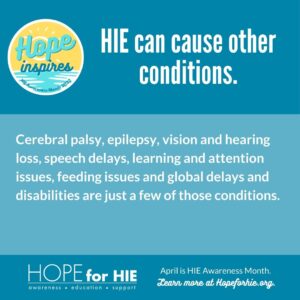Building Awareness of Hypoxic Ischemic Encephalopathy (HIE)

April is HIE Awareness Month, which offers a great opportunity to share information and resources for those who want to learn more. It doesn’t get as much attention as other disabilities in the AAC community, but some people with complex communication needs can trace the cause of their disability to Hypoxic Ischemic Encephalopathy (HIE).
Let’s start by breaking down the term HIE.
- Hypoxic = lack of oxygen
- Ischemic = restricted blood flow
- Encephalopathy = affecting the brain

Whether diagnosed as newborns or later in development, this form of brain injury is frequently associated with other conditions, such as cerebral palsy, seizure disorders, limited hearing and vision, feeding difficulties, and developmental challenges. There are many causes of HIE, including uterine ruptures and placental issues, near drowning, cardiac arrest, and other things that interrupt oxygen flow to the brain. By some estimates, 75-80% survive HIE, 50-70% experience seizures, and 40-50% develop a permanent developmental disability. Among those who have long-lasting disabilities, the effects range from mild to quite severe. The impact of HIE depends largely on what parts of the brain were affected and the extent of the damage. 
HIE is the second leading cause of infant mortality and lifelong disability worldwide. 2-3 per 1,000 live births in high-income countries, and upwards of 30 per 1,000 live births in low and middle-income countries, are diagnosed with a type of neonatal and pediatric brain injury, HIE. This diagnosis carries an array of outcomes, from
unaffected through loss. While you may think “preemie” when thinking of the NICU, most HIE babies are typically near or full term, born very ill, and go through a unique NICU experience. HIE has a wide variety of causes – from placental issues to cord compression during birth – and has some pediatric causes like near-SIDS events.
HIE can lead to a variety of additional diagnoses, with the most common being cerebral palsy, epilepsy, learning and attention issues, hearing, vision and feeding issues, and other developmental delays and disabilities.
Hope for HIE is an organization that supports global efforts to build awareness, educate families and professionals, and offer support. For more information, visit HIEawarenessmonth.com.

:::::::::::::::::::::::::::::::::::::::::::::::::::::::::::::
Disclosure: Carole Zangari is a member of the Hope for HIE Medical Advisory Board.
Filed under: Featured Posts
This post was written by Carole Zangari
